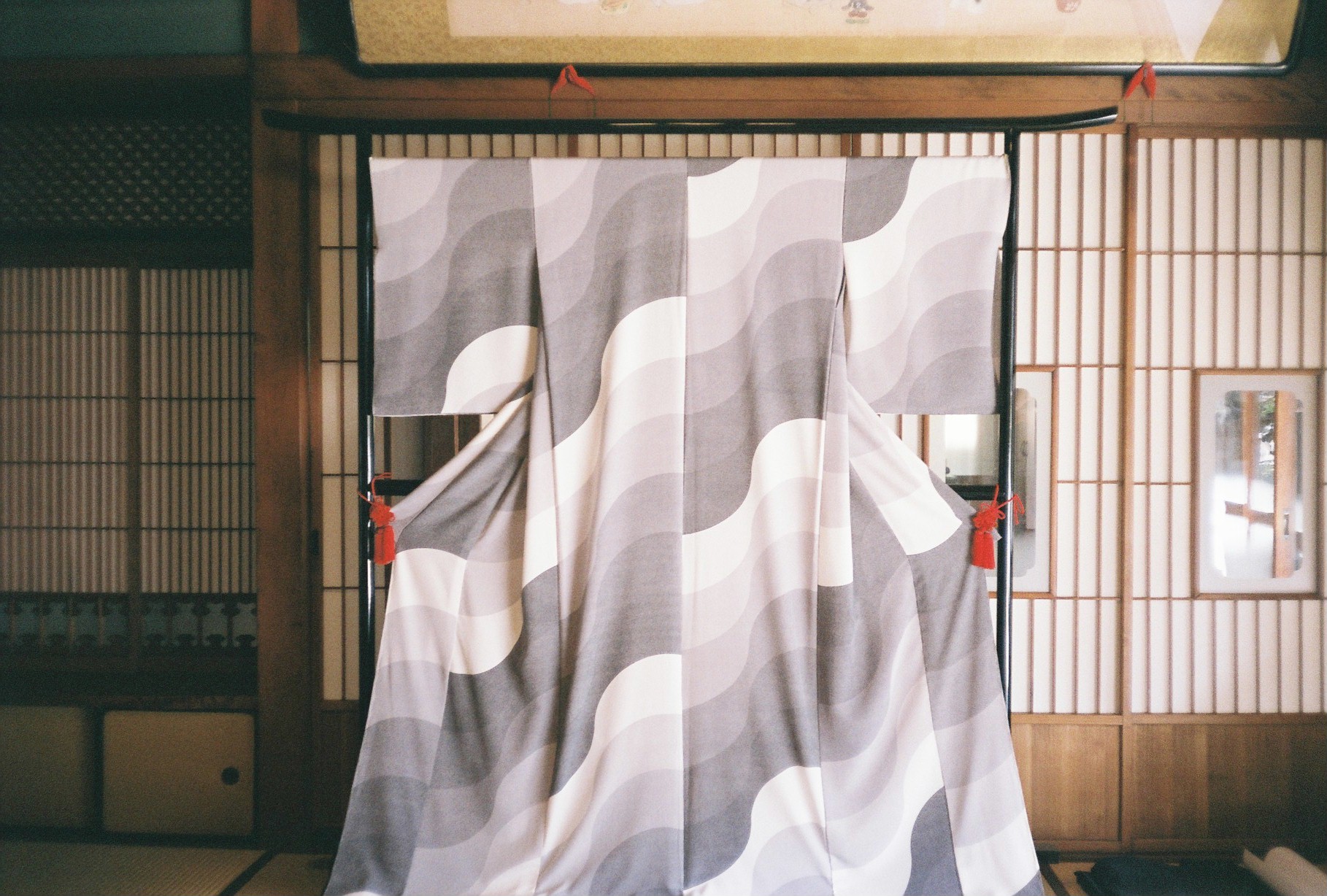
庶民の派手な着物を禁止する法令があった江戸時代。
いかにさりげなく、おしゃれをするか。
自由を規制される中、どう個性を出すか。
人々の遊び心を刺激したのは、細かい点で描かれる紋様 ”江戸小紋” でした。
その細かさゆえに遠くからでは一見無地の着物。
近くに寄ると柄だとわかる、まるでだまし絵のよう。
元は武士が身につける裃(かみしも)に使われていた紋様で、江戸中期には庶民にも広まり、紋様の種類も多様化していきます。
身近な自然、生活の一コマ、縁起物など、ひとつひとつの柄にストーリーや意味がある「粋」な世界。
In the Edo period, there was a law prohibiting the wearing of flashy kimonos by common people.
How to dress casually and fashionably?
How to show one’s individuality while freedom was restricted?
What stimulated people’s playful spirit was the “Edo-Komon,” a pattern drawn with fine dots.
Because of its fineness, from a distance, it looks like a plain kimono.
But when you get closer, you can see that it is a pattern, just like a trompe l’oeil.
Originally, this pattern was used on samurai kamishimo (formal dress worn by samurai), but by the mid-Edo period, it had spread to the general public, and the variety of patterns became more diverse.
The world of “iki” is a world where each pattern has its own story and meaning, such as familiar nature, a scene from daily life, or a lucky charm.
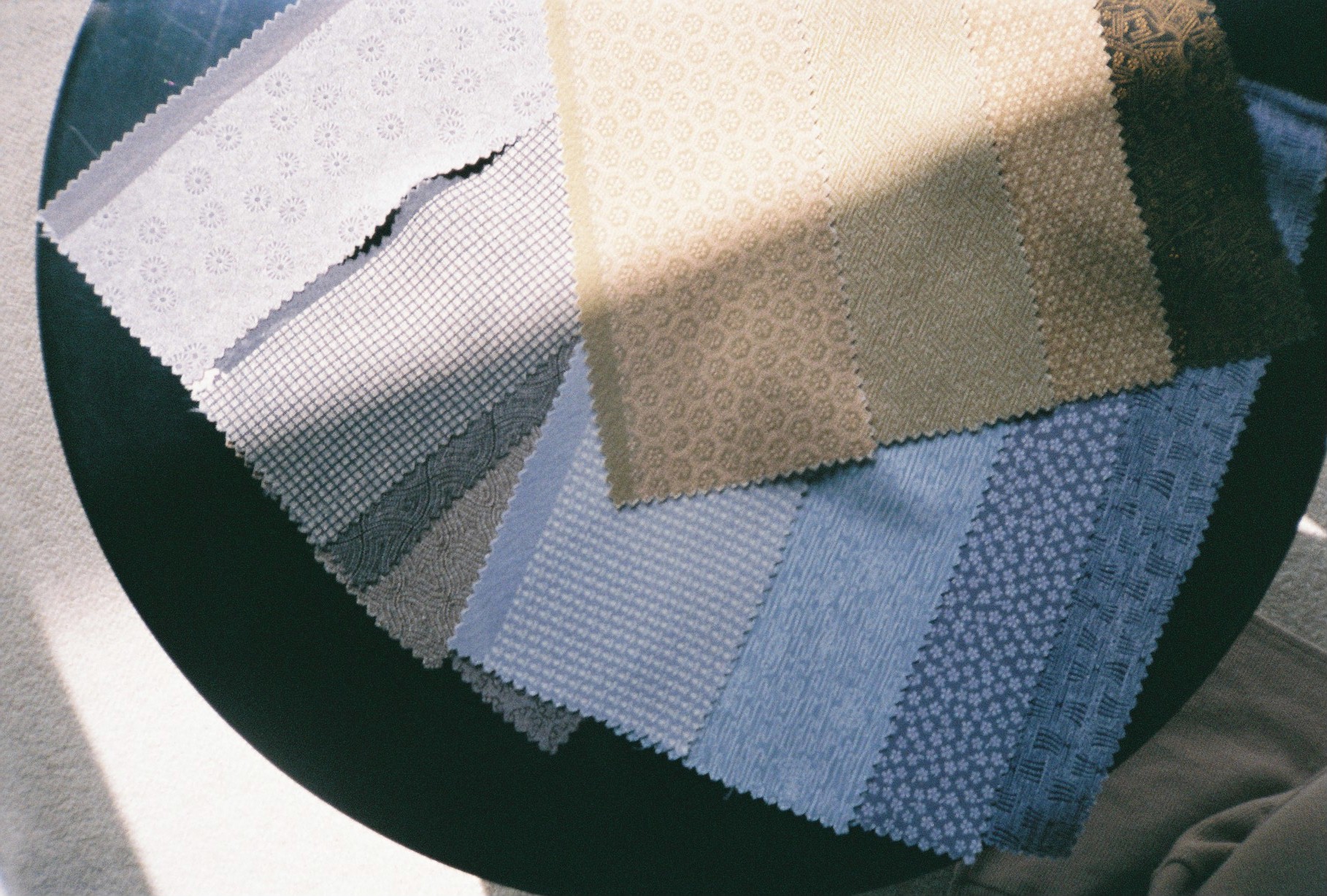
江戸小紋のプロセスは、まず型彫職人が、渋柿の抽出液で固めた和紙に繊細な柄を彫ります。
繊維の少ない上質な美濃和紙と、よく切れる極細の刃物、そして鍛錬された職人の技術、どれが欠けても完成しない芸術品。
次に染職人がその20cm程度の型紙を生地の上に置き、寸分の狂いなく型と型の継ぎ目を合わせて染色。
型にくり抜かれている小さな点にもち米と米ぬかで作ったノリをマスキングのように置き、その後全体に色を乗せ、蒸して染料を定着させ、最後にノリを洗い流します。
最初にマスキングした点々の部分には色が入らないため、江戸小紋は「白抜き」で仕上がるのが一般的です。
※eit swimのプロダクトではあえて黒でデザインしたものもございます。
In the Edo komon process, a katabori craftsman first carves delicate patterns on Japanese paper hardened with an extract of astringent persimmon.
The process is a work of art that cannot be completed without high-quality Mino washi with few fibers, an ultra-fine blade that cuts well, and the skill of a well-trained craftsman.
Next, the dyeing artisan places the 20-centimeter-long pattern on the fabric and dyes it, matching the seams of the pattern with the seams of the mold without any deviations.
Nori(paste) made from glutinous rice and rice bran is placed on the small dots hollowed out in the mold as masking, then the color is applied to the entire surface, steamed to fix the dye, and finally the nori is washed off.
Since no color can be applied to the dots masked off first, Edo komon fine dots are generally finished in white.
*Some of the eit swim’s products are designed in black dots on purpose.
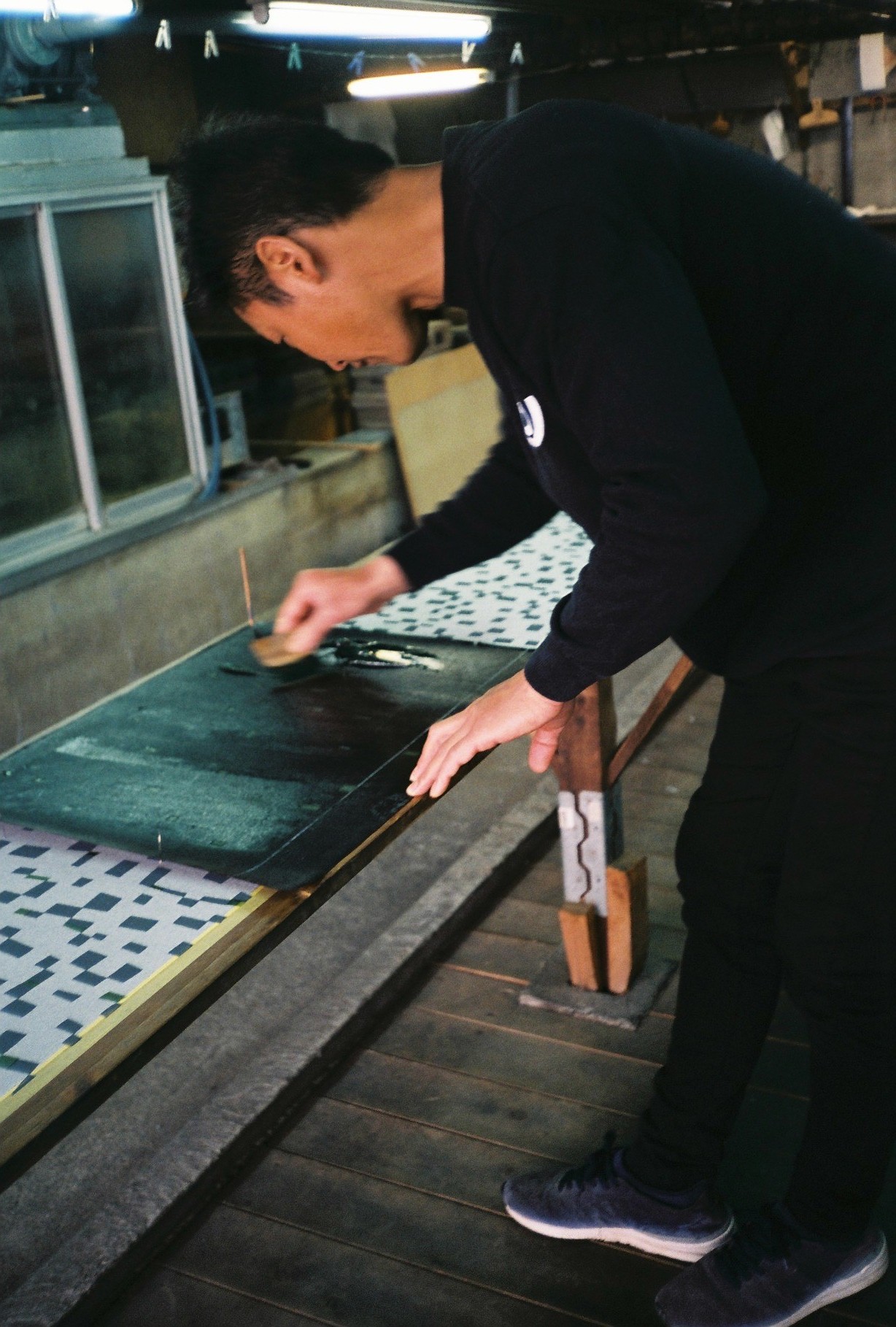


今回江戸小紋の紋様をeit swimに提供してくださったのは、
100年以上の歴史ある廣瀬染工場の四代目職人、廣瀬雄一さん。海を愛するウィンドサーファーでもあります。
廣瀬さんの工房には古くから受け継がれた型紙が約2万枚も大切に保管されています。
独創的な模様と技術が組み合わさった型紙は、それ自体がアートそのもの。
The person who provided the Edo-Komon pattern to eit swim 2023 collection is Mr. Yuichi Hirose, a fourth-generation craftsman at the Hirose Dye-Works, which has a history of over 100 years. He is also a wind surfer who loves the ocean.
In his factory, he has 20,000 pieces of paper patterns that have been passed down from generation to generation.
The katagami, a combination of creative patterns and techniques, is itself an art form.
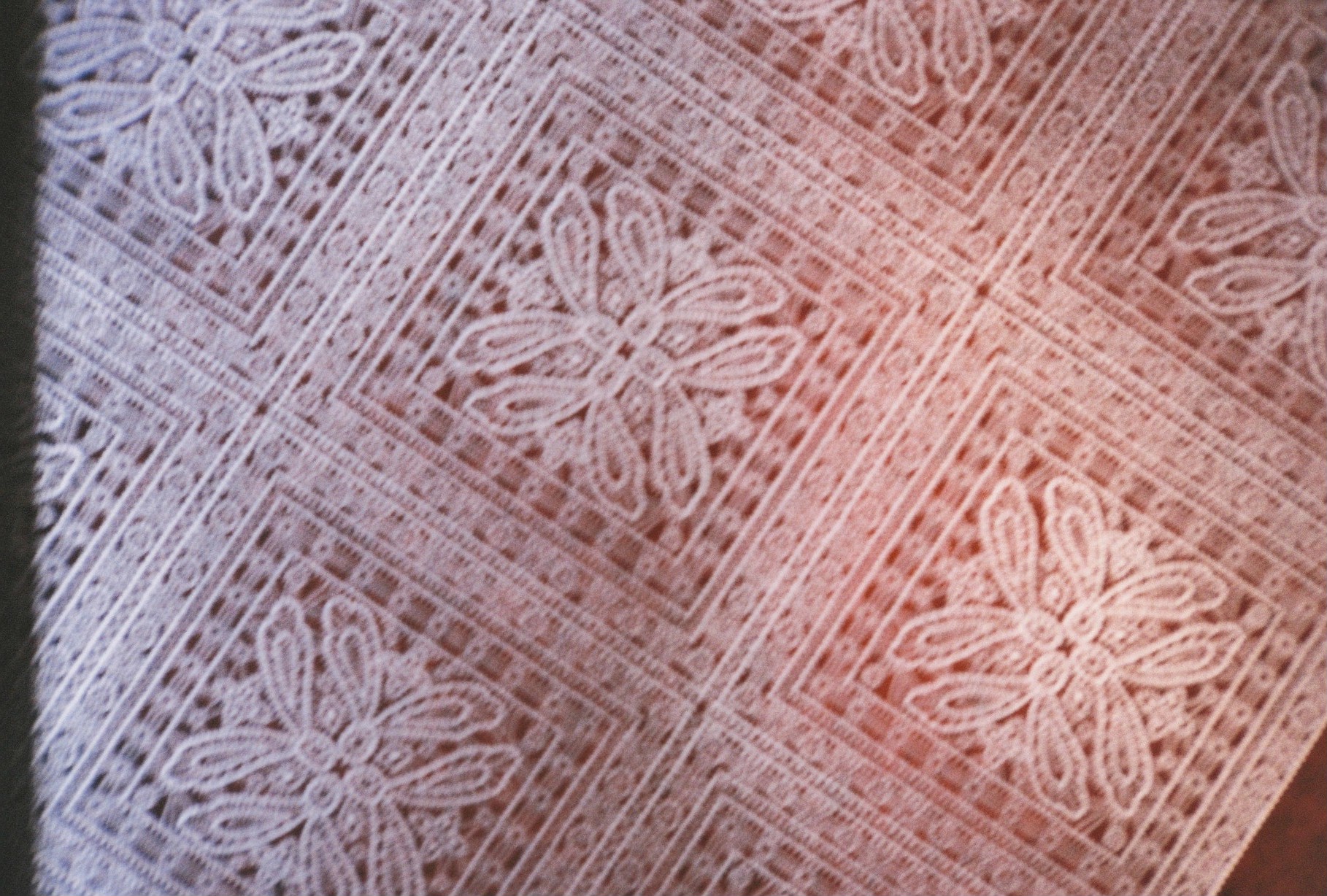
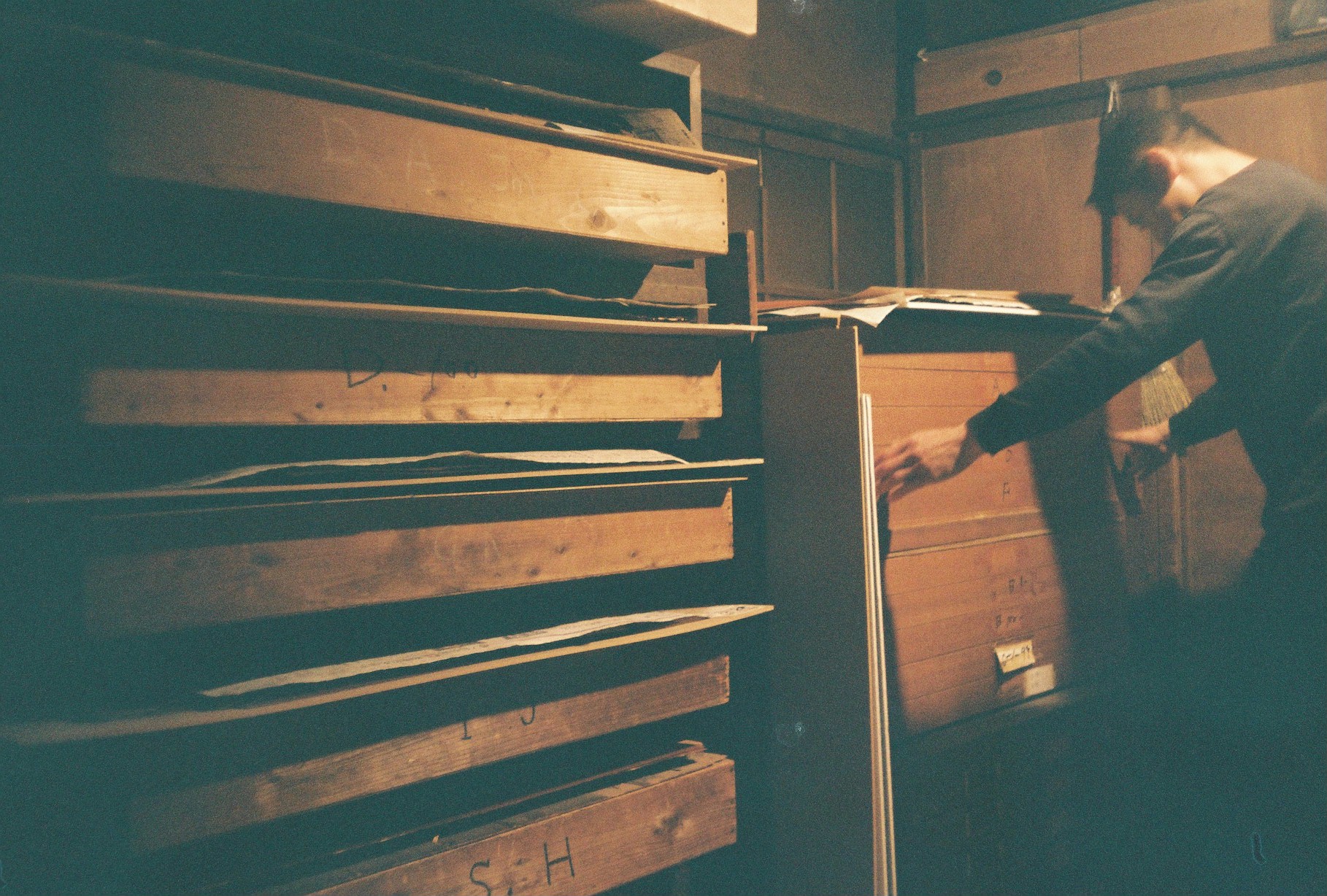

膨大な型紙の中からeit swimがセレクトさせていただいたのは、江戸時代から続く ”よろけ立涌(たてわく)” と”毘沙門亀甲(びしゃもんきっこう)”。
”よろけ立涌(たてわく)”は蒸気が立ち上る様を描いた紋様が水や涼しさといったイメージを彷彿とさせ、夏の着物に愛されてきました。”毘沙門亀甲(びしゃもんきっこう)”はパッチワークのような亀甲柄が連なる繊細な柄で、財宝、福徳、魔除け、健康をもたらす縁起の良い紋様とされています。
日本人が古くから着物の紋様によって四季や縁起担ぎを楽しんできたように、eit swimの水着で短い夏を謳歌してほしいという想いを込めて。
「柄はいつの時代も変わらない。江戸時代でも今でも、人が幸せを願う気持ちが紋様に込められています」と廣瀬さん。
eit swim selected the “Yoroke Tatewaku” and “Bishamon-Kikko” pattern from among a vast number of paper patterns, which has been used since the Edo period.The pattern depicting rising steam is reminiscent of the image of water and coolness, and has been loved for summer kimonos.”Bishamon-Kikko” is a delicate patchwork-like pattern of interlocking turtle shells, and is considered an auspicious pattern that brings treasure, good fortune, protection from evil, and good health.Just as the Japanese have long enjoyed the four seasons through the patterns on their kimonos, we hope that you will enjoy the short summer season with eit swim’s swimsuits.
“Patterns never change. Even now, in the Edo period, people’s wishes for happiness are still expressed in the patterns.” says Hirose.
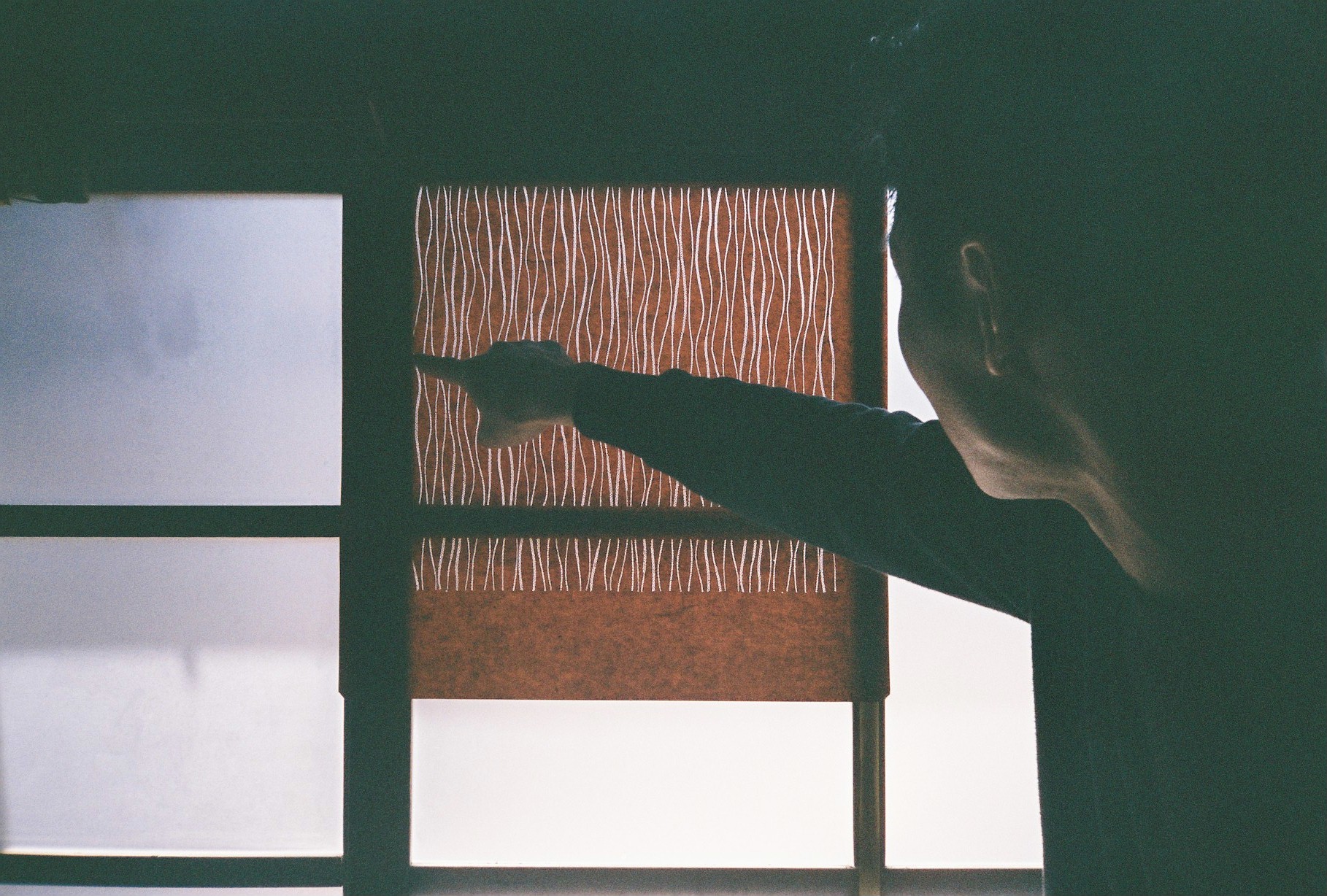
日本の細やかな技術、勤勉さ、粋な心。
何層もの想いが重なる江戸のアートワークを、スイムウエアにのせてお届けします。
Japanese fine craftsmanship, diligence, and the world of “iki”. We deliver artwork from Edo period on our swimwear.


染職人、廣瀬雄一さんのインタビューもぜひご覧ください。
check out the interview with Yuichi Hirose, a dyeing artisan from here.

